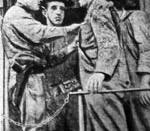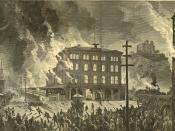Karen Joy Castillo
1/10/07
AP US History
Period 3
The Effects of Organized Labor on the Position of the Worker
In the late 19th Century, there were significant changes in American industrialization and in attitudes towards work. As improved technologies and machines in the industries took away the need for skilled workers, the new industrial workplace called for workers who had little or no experience, known as wage slaves. Wage slaves had little independence, low wages, and worked long hours in poor working conditions. In order to retrieve lost liberties and to improve the conditions of these workers, organized labor unions formed. Organized labor from 1875 to 1900, however, did not have an immediate impact on the position of workers. The success of organized labor was hindered by the failure of strikes, many advantages that employers had over laborers, and the struggles of many different unions that emerged.
Strikes were common uses of protest by unions in hopes that they were more effective in achieving their goals rather than negotiating.
In the late 19th century, however, strikes took a turn for the worse. This time period marked some major strikes against the industrial managements, such as the Great Railroad Strike of 1877, the Homestead Strike, and the Pullman Strike. None of these strikes really had a positive outcome. In fact, Thomas Nast's cartoon suggested that the nation was headed towards a war between labor and capital. The Great Railroad Strike of 1877 was one of the most violent strikes of that time. It was caused by wage cuts in railroad companies that were supposed to reduce costs, especially because there was an economic depression going on. Encouraged by unions, the railroad workers decided to fight for higher wages. However, the end result of the Great Strike of 1877 was...


